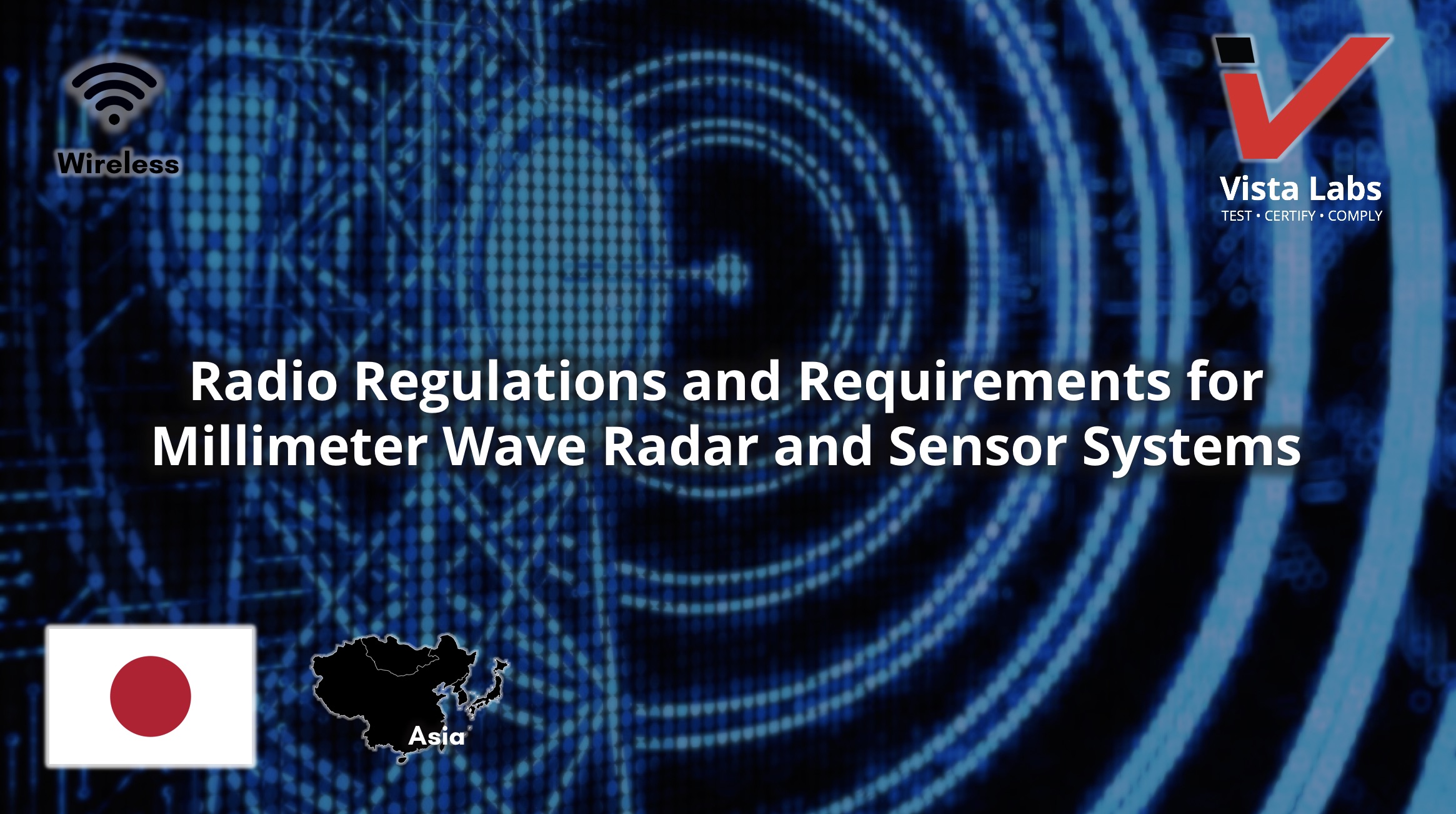The Ministry of Internal Affairs and Communications (MIC) of Japan amends regulations for radio equipment to introduce new technical requirements for milliwave radar/sensor systems.
Because of the introduction of new wireless systems using broadband milliwave radars, and the expectation of new products using these applications soon to enter into market, Japan will amend the current technical regulations for milliwave radar/sensor systems based on these new usage needs.
For example, motion sensors or gesture sensors that remotely control mobile devices or TVs, or biological information sensors that captures slight movement on the human body surface to measure heart rate with a high accuracy.
Considering that data communication systems in 57 - 66GHz frequency ranges have been changed significantly, it has been deemed necessary to review the technical standards for low power data communications systems.
Technical Requirements of Milliwave Radar System
| Frequency Allocation | 57GHz - 64GHz | 57GHz - 66GHz |
| Antenna Power | 10mW or less(Peak) | 250mW or less(Peak or Average) |
| Occupied Bandwidth | 7GHz | 9GHz |
| Antenna Power Deviation | Max 50%,Min 70% | |
| Antenna Gain | -- | 10dBi or more |
| EIRP | 13dBm or less | 400dBm or less |
| Frequency Deviation | Depends on designated frequency | ±20ppm or depending on designated frequency. (±500 ppm or depends on designated frequency in the case of 10mW or less only.) |
| Modulation Type | Frequency Modulated Continuous Wave | -- |
| Housing requirements | Both high-frequency portion and the modulation unit shall not be capable of being opened easily. Further, in the case where the high-frequency portion and the modulation unit are separate, each of them shall not be capable of being opened easily. | |
| Transmission Time Control | Duty 10%, in 33msec cycle | -- |
| Crosstalk Preventing Function | By identifying the modulation type and other characteristics of the received radio wave, the radio equipment should have capacity to distinguish between the reflected radio wave that is transmitted by the local station and the radio wave that is transmitted by other station. | |
| Other | Have a means that terminate the transmission of radio wave. | Transmitters are required to have a carrier sense function. |
| Unwanted Emission Strength (57GHz - 64GHz) | ||
|---|---|---|
| Frequency Range | Limit Value (Peak) | Remarks |
| 55.62 GHz or less | -30dBm/MHz | Spurious |
| 55.62 GHz - 57GHz | -26dBm/MHz | Outband |
| 64 GHz - 67.5GHz | -26dBm/MHz | Outband |
| Over 67.5GHz | -30dBm/MHz | Spurious |
| Unwanted Emission Strength (57GHz - 66GHz) | ||
|---|---|---|
| Frequency Range | Limit Value (Peak) | Remarks |
| 55.62 GHz or less | -30dBm/MHz | Spurious |
| 55.62 GHz - 57GHz | -26dBm/MHz | Outband |
| 66 GHz - 67.5GHz | -26dBm/MHz | Outband |
| Over 67.5GHz | -30dBm/MHz | Spurious |
| Secondary Radiated Emission Strength | |
|---|---|
| Frequency Range | Limit Value (Average) |
| below 1GHz | Average power should be 4nW or less in any 100kHz bandwidth |
| above 1GHz | Average power should be 20nW or less in any 1MHz bandwidth |
The proposed date of entry into force for these radio equipment technical regulations is January of 2020.



